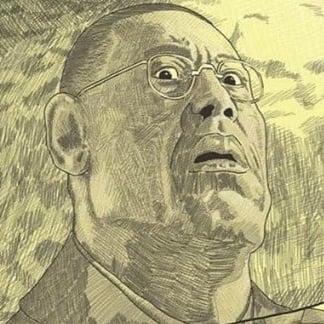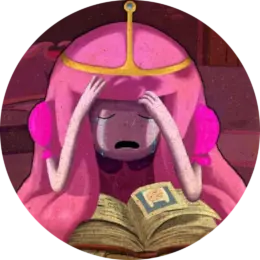Tbh it’s surprising that Japan is as strong as it is with the shitty spawnpoint they had (basically no or shitty resources)
In a way, it’s kind of like bri’ain, innit?
Honestly though, they were kinda shit for most of their history. Japan didn’t really become a major world player until after the late 19th century, when they realised just how far behind they were.
Well, they had their presence in the late 16th-early 17th century
There’s this whole anthropological theory that people’s from regions that have less resources resort to pillaging as means to survive; after many generations they become so good at it that they just simply continued to do it.
On the flip side, you have countries that have it all, in particular Asian and American countries, that never developed such a need because resources were abundant.
Oh shit, it’s the “hard times create strong men” thing
Pretty much. Look at how India and China have people who overwork and overstudy. Meanwhile many western countries have a good work life balance and have a lower / easier standard in education because they don’t need to do much to survive.
India and China are rich as hell though, they have a ton of resources. Shouldn’t they have more laidback populations then?
Guess it has to do with the fact that Europeans, primarily, have been fucking India and China over the past 100-200-ish years. Resulting in many Indians and Chinese not having access to their own reaources and so creating that whole overwork/study culture thing.
Yeah, that makes sense.
India isn’t, it’s a 3 trillion economy for a billion plus people. Per capita that’s very low. India recently did a lot of expeditions to try and find oil but had no luck. There are a lot of spices (which were just stolen for years by colonial powers) but the value of those has reduced compared to newer technologies like semiconductors.
China has just become rich recently, there should be a decline / easing of pressure on people in the next few years / decades.
That’s not my point. Japan is a rich country nowadays but it does not have a lot of natural resources ancient people could use, which is what I’m talking about. As the theory goes, a resource-less country should give rise to an expansionist, aggressive society in search of said resources whereas countries like India and China, with plenty of water, fertile land and valuable minerals should give rise to more laidback societies, which is the opposite of what you’re claiming.
They’re talking about right now. Historically India and China were relatively wealthy (by the standards of the time), and so were usually on the receiving end of invasions.
Damn, the storm’s coming then
They’re min-maxing for an island nation playstyle. High focus of fishery, invasion defense +10, special perks to survive natural disasters…
Special perks to use natural distasters for defence.
I think you’re missing a bit here: The Japanese were historically hunter-gatherer societies far longer than their mainland neighbours. The reason appears to be a large abundance of food and resources, to the point that the Japanese hunter-gatherer societies are believed to be some of (if not the) only hunter-gatherer societies that formed year-round stationary settlements, because they had enough resources to not be reliant on wandering, as other, nomadic societies had to.
Historians believe that the Japanese only converted to agriculture once rice strains and agricultural methods that were suitable for their climate had been developed in Korea for over a thousand years, because thats how long it took to make agriculture able to compete against the hunter-gatherer lifestyle in Japan, due to the vast amount of resources.
Source: Guns, Germs and Steel (Jared Diamond)
Was this before or after the yayoi period?
If memory serves me right, I’m talking about the Jomon period, which is the periode from about 10 000 years ago, up until about 2500 years ago, when the Yayoi period started. I believe the start of the Yayoi period is marked (among other things) by the spread of agriculture throughout Japan.
Checked it out and no, the jomon period ended around 300 BC. So while Alexander’s successors were fighting each other Japan had barely discovered agriculture
Yes: 300 BC is about 2500 years ago, which is roughly when the Jonson period ended.
My point was that the reason agriculture had not spread to japan yet wasn’t because they weren’t aware of it, but because Japan was so resource rich that it wasn’t able to compete as a lifestyle.
It’s well documented that the jomon culture traded with Korean farmers for centuries or even millennia before adopting agriculture themselves. This is an important reason for why they weren’t wiped out by disease when they came into contact with agricultural societies. Historical evidence also suggests that they were better fed than their agricultural neighbours in Korea and northern China in that period.
In short: The reason Japan started developing e.g. metalworking much later than their neighbours wasn’t a lack of resources, but an abundance of them. Which led them to not adopt agriculture before neighbouring societies had developed it sufficiently far to become competitive. Technology and social stratification typically follow once agriculture is adopted.
Glad I’m not the only one who thought this. There are definitely big differences, but in some surprising ways, Japan always struck me as being like the England of the east.
I always think it kind of is! Island culture with antagonistic relationship with the mainlanders. Weird tea-based rituals. Imperialism. Longbows. Northerners considered hairy savages.
A lot of that is because in an attempt to rapidly modernise and prevent itself from being colonised, Japan imported a ton of ideas from all over Europe, including imperialism.
Exactly. Their swords had to be well-honed simply because they would break otherwise, because the ore they were using was absolute shite.
These weren’t God slaying weapons, heck even after all that labour, they’d still struggle against just about any slash resistant armour. Basically any swordsmith from a country with actually decent ore could trounce these swords with ease.
Imagine how happy they would’ve been to just heat up some spring steel and hammer on it for a bit and make a better blade with a fraction of the effort.
You still have to admire the craftsmanship and the length they went or still go.
Look man, why don’t we talk about spears across cultures?
It’s a weapon of the people and FAR more useful.
I keep a pitchfork handy as a wall decoration but I live in an apartment. It is my reminder of the need to fight back in the class war.
I live in a house in San Diego. I have a pitchfork, easiest way to spread mulch.
The crossbow is for defense.
Swordsman: Noooooo!! You can’t just poke me from all the way over there! No fair!!
Pikeman: Haha 20 foot pole go brrrr
The only downside is that it’s not good for slashing (unless you count some variants, like halberds, as spears), but the extra range makes it usually better for 1-on-1
You can definitely slash with most spears, there’s just less surface area to cut with compared to a sword.
You can bonk them on the head with the haft too. Every part of the spear is dangerous. If you are trying to get in under a good spear user it is so scary. They are so dangerous you can’t really practice with them at full speed.
Most of the pull arm weapons eventually devolved into halberd type pulling and slicing weapons. They were used primarily to remove mounted troops from the tops of horses, while slicing off their limbs.
There were lots of variations of halberds, pole axes and the English Bill.
There is a great book on the matter. Weapons in international encyclopedia from 5000 BC to 2000 AD.
Poleaxes were certainly used for more than yanking people off horses—they were the knightly weapon of choice for a couple centuries at least. I’d hardly call it a “devolution” of the spear.
Swords look cooler. Almost no one used a sword on the battle field throughout history. Everyone used pole arms of some sort. But swords seem cool, so get much more attention.
The Japanese used katanas as their daily carry weapon of choice. In fact, samurai would carry two swords with them!
However they had a very low crime rate. Ironic.
But not on the battlefield, they’d use naginata or something like it for that.

Here is an alternative Piped link(s): https://piped.video/ULQlg8RgkkA
Piped is a privacy-respecting open-source alternative frontend to YouTube.
I’m open-source, check me out at GitHub.
Taco has entered the chat.
Crossbows. We need more crossbows.
Chinese automatic crossbow go brrrr
It’s a weapon of the people
U r joking, the people’s weapon is the > scythe. I remember hearing in history class about how it was used in a war/revolution
no, it wasnt the marxist oneafter putting the blade in vertical position, and that it was so effective that for a time it became the national flag.And yeah, also the communist have it
now im talking about the marxist one.Polearms in general were ubiquitous throughout history. Pretty much anyone can pick one up and get the general idea of poke the enemy with the sharp end and use the length to keep them away.
An agricultural scythe would likely be a terrible weapon. It is designed for slicing though grass and brush, close to the ground, often with the snath shaped ergonomically to better facilitate this. Also, Austrian scythes in particular after curved three-dimensionally in an asymmetrical manner. Using it as a polearm would be incredibly awkward (D&D really does the scythe dirty) and there is not a good way to mount the blades vertcally in either main branch of European scythe, without modifying the part of the blade that attaches to the snath. But then, you have what amounts to a primitive halberd with a more fragile blade.
Now, if you mean sickle, I can definitely see more agreement there, though a pike or spear would be easier for most to use as a weapon as the motions used to harvest grain with a sickle are quite different from those that would be needed in combat.
Ah… the endless plight of the Katanaplonkers…
Listen: The more you defend the Katana, the more fun it is to troll you by pretending anyone actually cares.
It’s a sharp metal stick, alright. Stick 'em with the pointy end.
BUT IT’S PRIMARILY A SLASHING WEAPON REEEEEEE
Stick 'em with the pointy end.
Instructions unclear, got my dick stuck in the pointy end
In?
Don’t ask, just halp
Somehow, that’s still better than the logical alternative.
I mean, arguing over the best sword is a silly thing to do anyway. Swords are sidearms. People carried them around in case their actual useful weapon broke, or for some reason they ended up fighting in a melee unexpectedly. Could be you were ambushed, could be you’re an archer that got caught in the fighting. Point is, if you’re in a sword fight something has already gone very wrong. Spending a bunch of money on a fancy high quality sword is a thing only rich people did, not soldiers, which is why fancy swords became associated with status in the first place.
Too many One Piece fans are going to get shot in the stomach by crossbows if we ever go back in time. Just running in with Katanas in their mouth.
Responding the muskets with punching
Dont you know the moment you stick a sword in your mouth it instantly gains the ability to cut through steel and even dudes made of diamonds if you try hard enough. ;-)
well swords were also used for personal defence, i would argue that’s the main use-case historically.
A short sword and a buckler hung on your belt is very portable and extremely useful to have if you need to suddenly defend yourself while out on a road. Compare this to a polearm, which while better at keeping the nasty man away so he can’t poke you with his sharp stick, is also a big clunky thing that you have to lug around.
That’s one of the things I meant by ending up in a melee unexpectedly. Presumably most people aren’t going around doing things they know will end up with them needing a weapon for self defense. It happens, but it’s not usually plan A. You are right though. That was a reason to have a sword. The theme is that swords were good when you needed something you could carry without it getting too much in the way. That’s what they’re good for. If you expected to be fighting you’d bring something better.
Swords were a personal defense status symbol. They were fairly expensive, required training, and were often legally restricted deoending when and where we are talking about. This is why they continue to have sich mystique.
Most peope who needed self defense used a stick
if you’re in a sword fight something has already gone very wrong
That’s always my first thought.
Oh my g.o.d! Do you think a swordsman main weapon was a bazooka? I’m not an expert on Japan, but in Europe the side arm was a dagger, which was very commonly used alongside with certain types of swords such as rapiers. Arches did not carry swords at all, though they could have had knives. A sword was a nobleman’s weapon and a peasant would forfeit their life if in possession of one (archers included). The same applied I Japan.
Historically accurate shitpost
Does lemmy have a History memes community yet? I miss that from reddit
The average croissant has more folds than the average katana
God, weebs are so dumb and annoying. I love the East, but Japan is backwards in a lot of ways. I mean, every country is, but weebs act like Japan is somehow far above the rest in every conceivable way.
When I went to live in Japan for a year on a fellowship, I was intensely scrutinized for a bit until they were sure I wasn’t a weeb. Only then was I more welcomed socially. For some reason, people don’t like being fetishized. Who knew?
Both groups have way too many incels.
What does being virgin have to do with this?
Virgins and incels are different
I don’t know shit about metallurgy, but if they had better iron and still folded it 1000 times, would glorious Nippon steel be even more glorious?
There is no practical benefit to folding regular steel
Does it help remove impurities or something? I should try to read about this later.
There are good impurities carbon, maganese, silicon, nickel, magnesium, etc. (aloy elements) with benefitial properties and bad impurities like sulfur, hydrogen, oxygen, nitrogen (gases traped in the iron) that are essentialy holes in the crystal structure. The best way to get gases out of iron is to heat it up till its liquid and spin it in a centrifuge. The elements will layer themselves depending on their density. Gases will move to the center of the centrifuge and escape out of the metal.
The steel you can buy to make knifes/swords nowadays is pretty good to start with if I understood it correctly. Many fold softer steel around the cutting edge to give the blade more flexibility, but impurities shouldn’t be a major issue with modern steel.
I know shit about this as well, but I watch way too many videos so I’m obviously an expert 💖
Imagine a jar full of marbles. Imagine there’s a shit ton of random large gaps between some marbles across the jar. You can remove those gaps and redistribute the marbles more evenly by smacking the jar. You then end up with bigger groups of closer marbles.
Folding is smacking the jar. It redistributes the atoms in the material in a more homogeneous, more consistent, more uniform way. That’s desirable in materials that are made up of lattices, e.g. steel. Makes them stronger overall because now you have larger groups of atoms connected to each other, fewer gaps within the material.
I once read that folding regular “good” steel is actually decreasing it’s quality because you start hammering out the carbon (?).
Take this with a grain of salt though, I can’t remember the source. Would be nice if someone with actual knowledge in metallurgy could confirm this
deleted by creator
Yep, the people who marketed Katanas and Samurai were straight up liars. It was eye-opening to see how much they were shilling. It was the old equivalent of “clickbait” back then, and definitely fake news. I remember reading that they only folded the metal something like 10 times usually because folding it too much would just make the sword brittle.
I was also surprised that Katanas weren’t that strong and couldn’t really be used to block and might snap if used against bone too many times. And could be stopped by stuff like thick wooden armor. It’s why Samurai didn’t carry handheld shields. Since Katanas couldn’t penetrate their armor, they just used parts of the armor to block.
Then again, most swords weren’t useful against strong armor. That’s what spears and hammers / maces were for. The more I learn, the more I realize medieval fantasy (and historical fiction) tropes are so incredibly wrong.
Generally, speers are being done dirty. Like close up sword battles and duels are just cooler, in a way, but the spear was the backbone of many armies. Perfect for even simple formations, it gives range edge, spears are cheaper to produce, easier to train untrained people in and so on.
Yup, even in Japan, the general weapons of choice were the spear and the bow. The sword was mostly ceremonial.
If a samurai had their sword out in a battle, they had probably fallen off of their horse and were in a lot of trouble.
In some time periods there was actual dueling. People of rank would call out their name and position and duel with someone of the same standing.
This ended after the mongol invasion. They tried calling out the mongols for duels and the mongols didn’t know what that was and didn’t give a shit and just cut everything down.
At that point the Japanese dropped that for actual war.
It just makes sense. Why would you go in with a sharp piece of metal when you could just shoot a sharp piece of wood/metal from a safe distance?
Whenever you actually see a spear in a movie or TV show, they always start twirling it and dancing around like a majorette. Which is pretty legit against a single opponent who manages to close the range, but still pretty unrepresentative of the weapon they don’t call Pokey McPokeface.
Most slashing swords are stopped by thick armour, that’s not unique to katana. Katana were plenty sharp enough, brittle metal tends to take a sharp edge, their weakness was mostly durability.
Heck, in Europe, if your opponent was wearing armour, it wasn’t rare to grab your sword by the sharp bit, and bludgeon them with the cross-guard.
Or fight half-sword (Halbschwert), you grip the blade with your free hand around the middle to deliver stronger and/or precision strikes against weak points in your opponent’s armor.
Folding something 10 times results in about 1000 layers, 11 times is about 2000 layers. So you get to “thousands of layers” with low double-digit folds. But I don’t think most people think about the difference between layers and folds; when they hear “thousands of layers,” they think many more folds than it actually is or they just use them interchangeably getting it totally wrong.
I wonder how an authentically-made katana would do against an authentically-made Damascus steel sword?
A decent portion of Japanese sword fighting techniques revolve around how to not break your sword in half while using it. That’s not a concern with Damascus steel swords
The katana bends and gets like unusable (the soft back only makes it more bendable) while a normal eurobean sword would maybe have a stratch on the edges.
At least i think it was like this when i saw a documentary a while ago where they fixated the swords at a table and swinged with power on the other, with the fixated katana i itnk booth had a defect in on the cutting edge but weh the eurobean smord was fixated the katana had enough room to bendSo yea the soft “whoa it is more flexible and agile” part is the weak point
There was a documentation where they had a weapon smith that used medieval techniques. He made an normal European sword and a katana from around the same time.
When he used the katana to cut through the sword it broke.
Ok tbf katanas are cool but so are longswords and axes.
Viking hand axe, my love
This. The best way to stop a contamination from ruining your material, if you have no way to purify the material in bulk, is to spread the contamination to the entire material, so that it does not become a singular point of failure. Plus, by folding a thousand times, you increase the possibility of accidentally forcing nodes of contamination to the material’s surface, allowing it to burn off in the forging process.
Everyone* folded their steel from a bloomery furnace prior to the Bessemer process



















